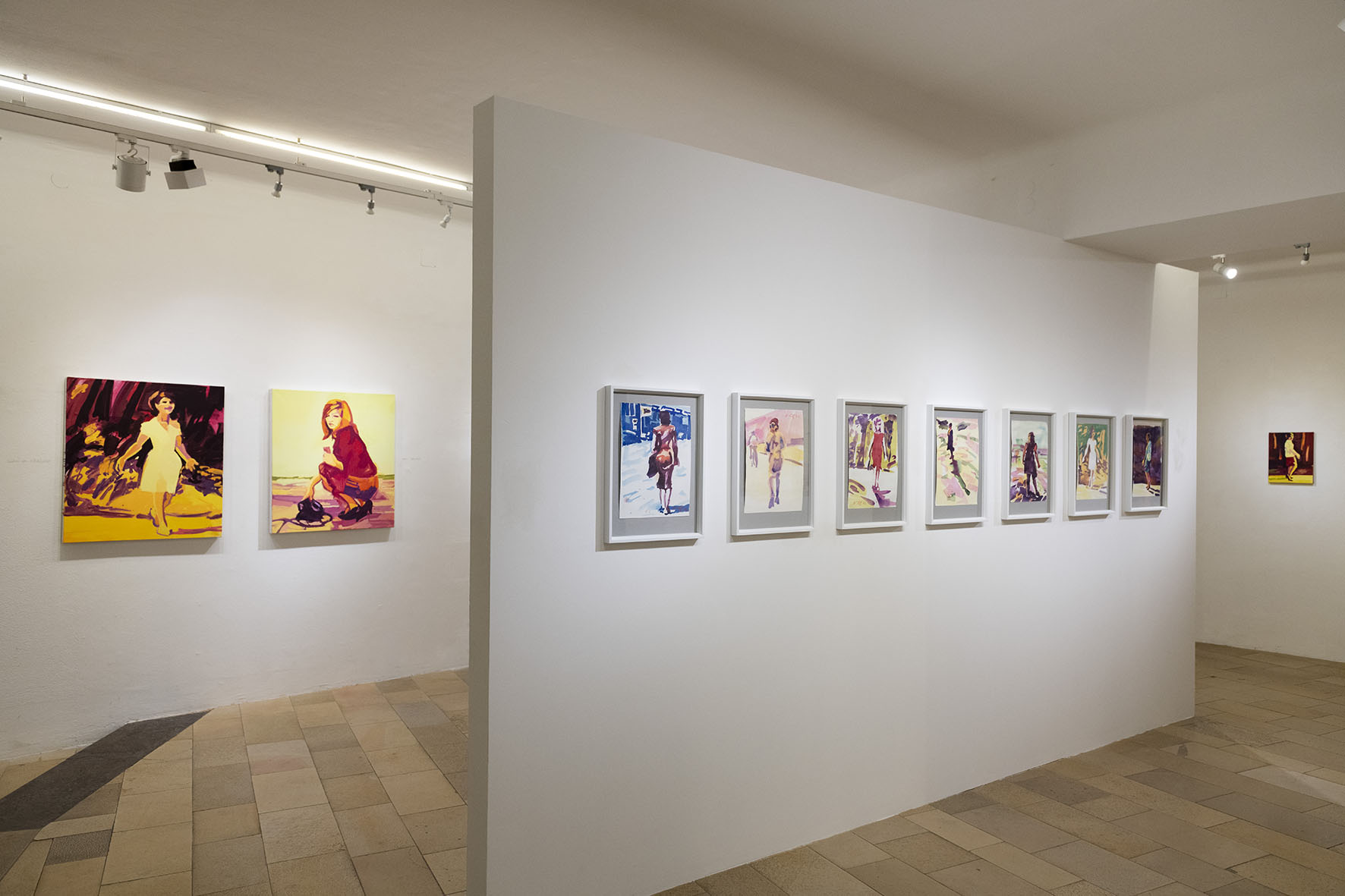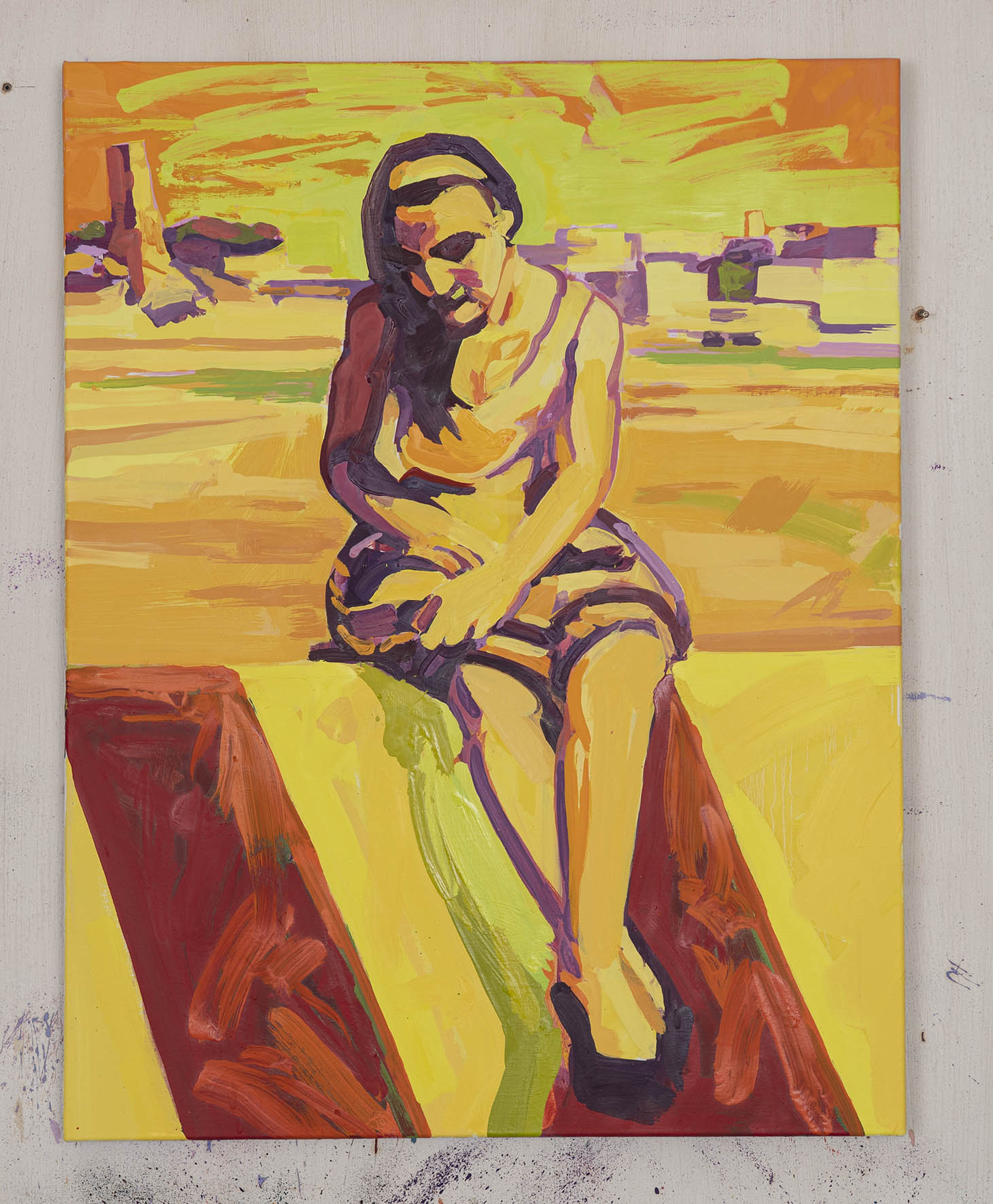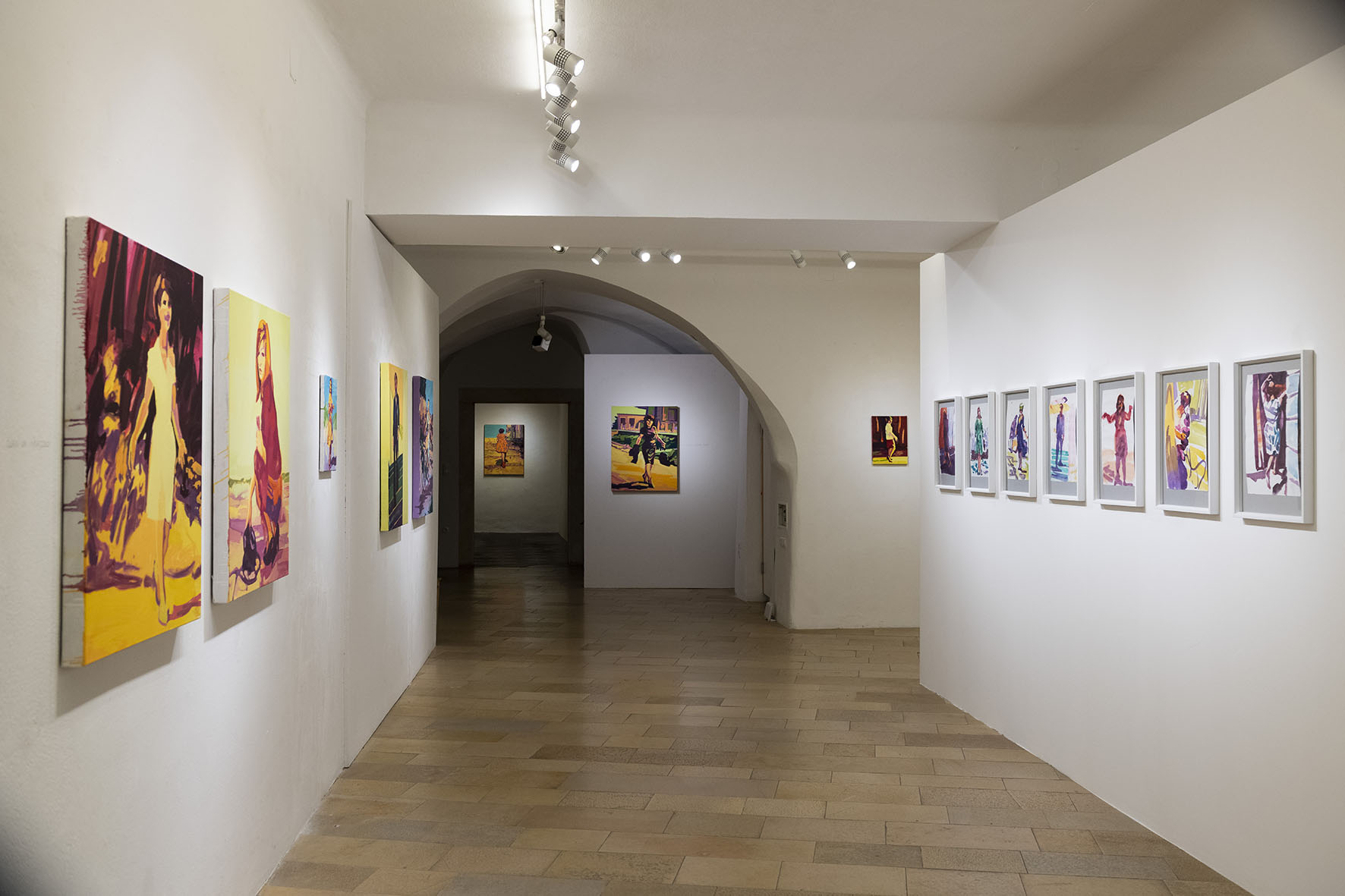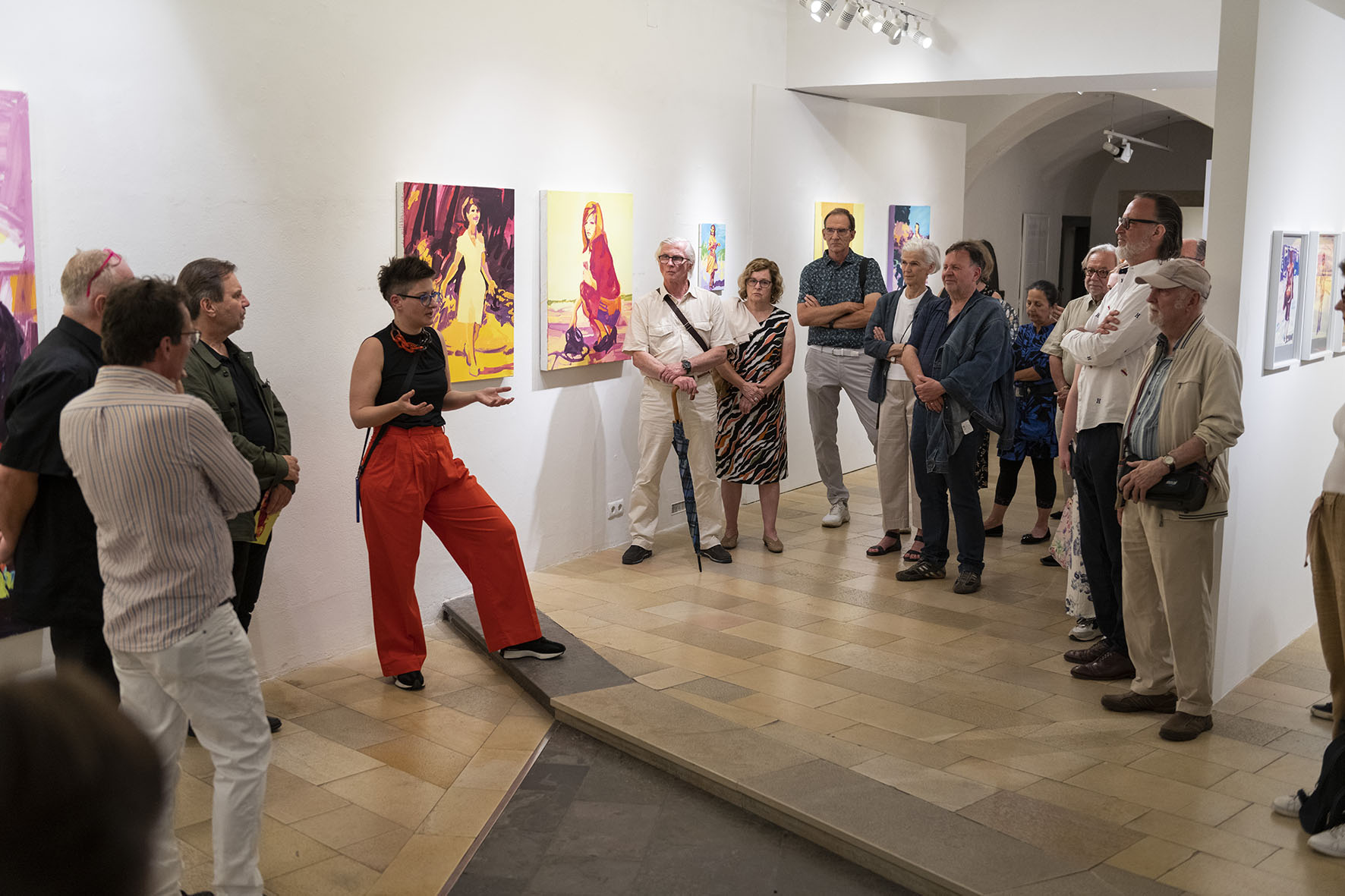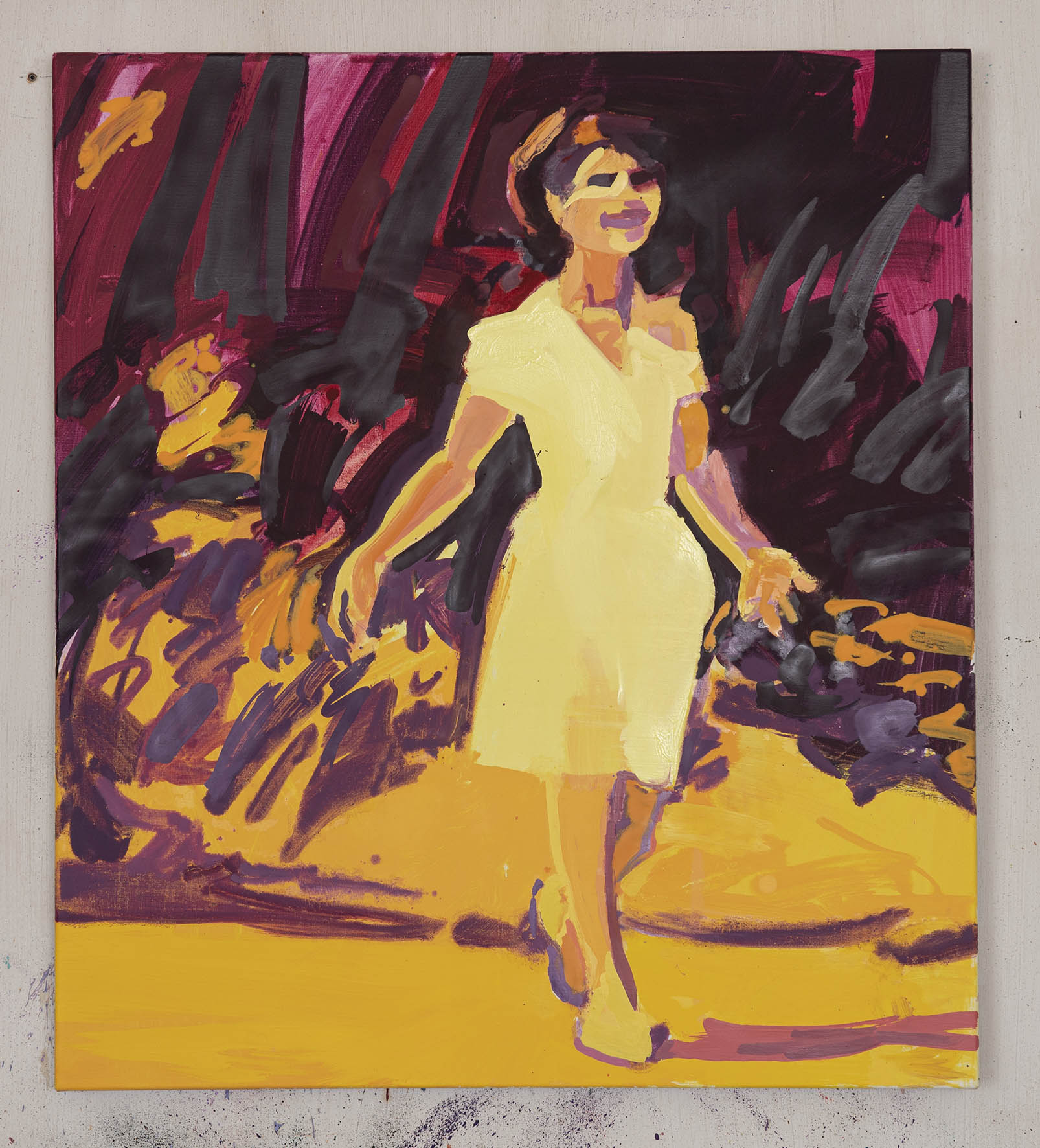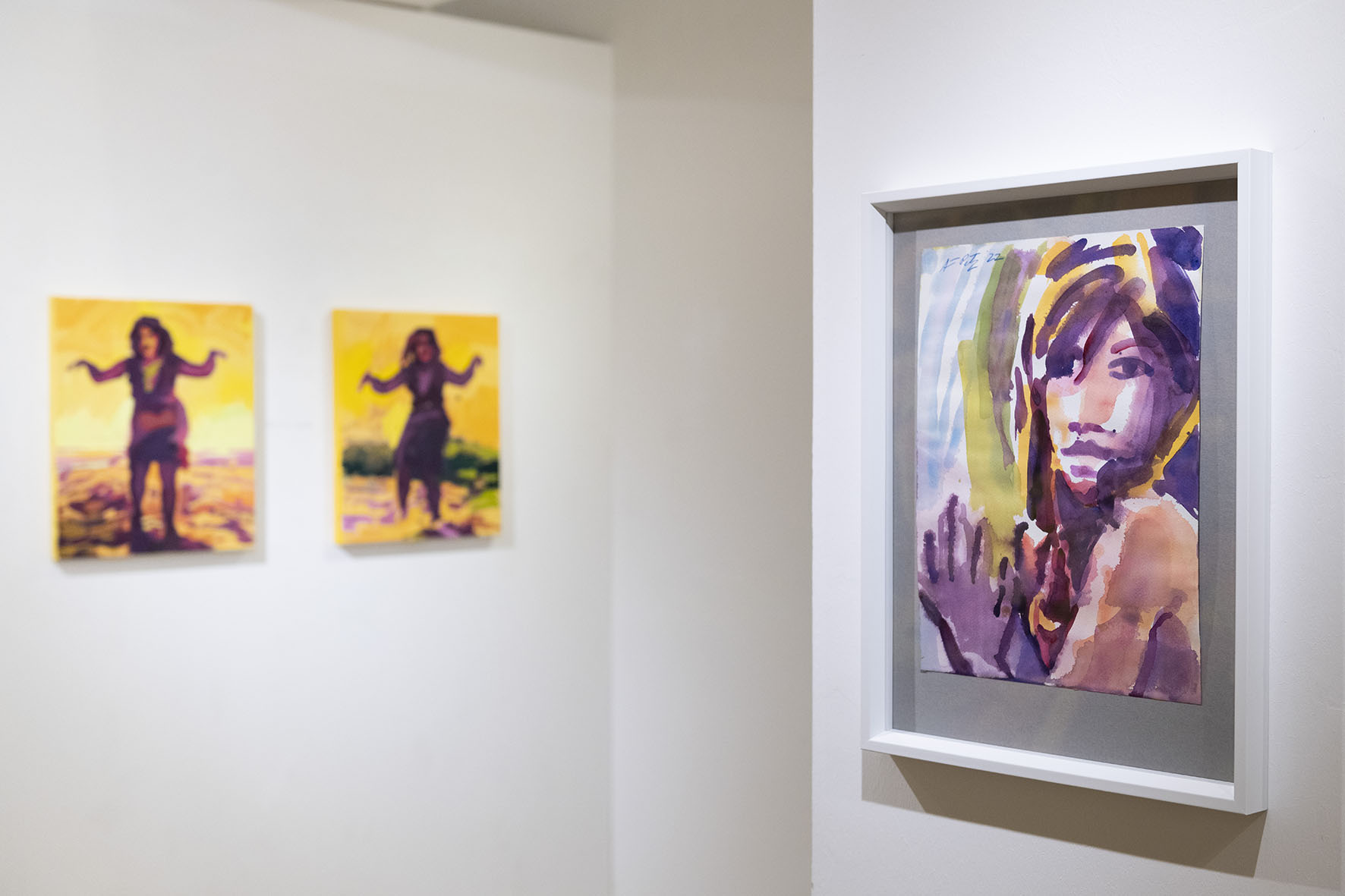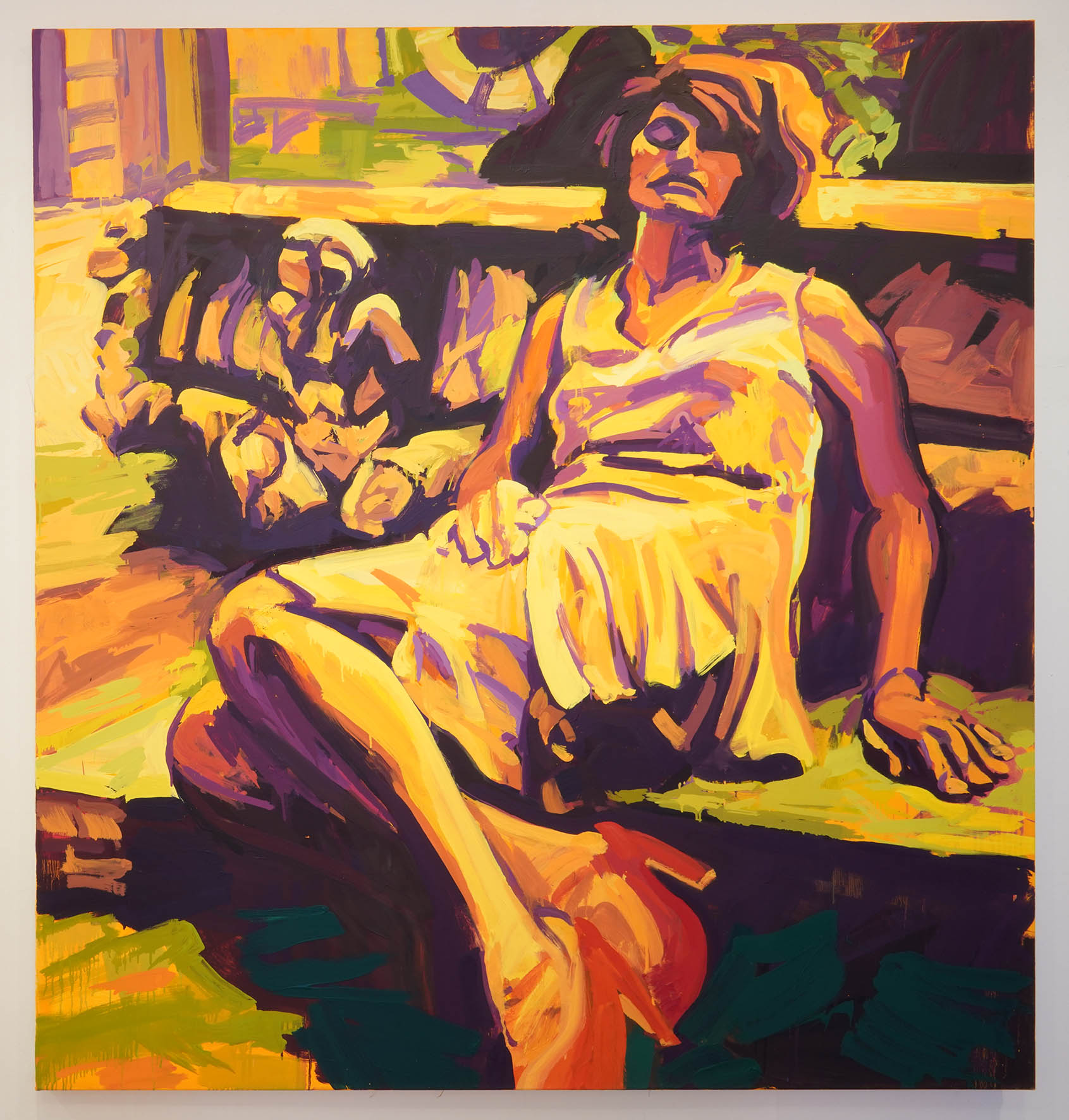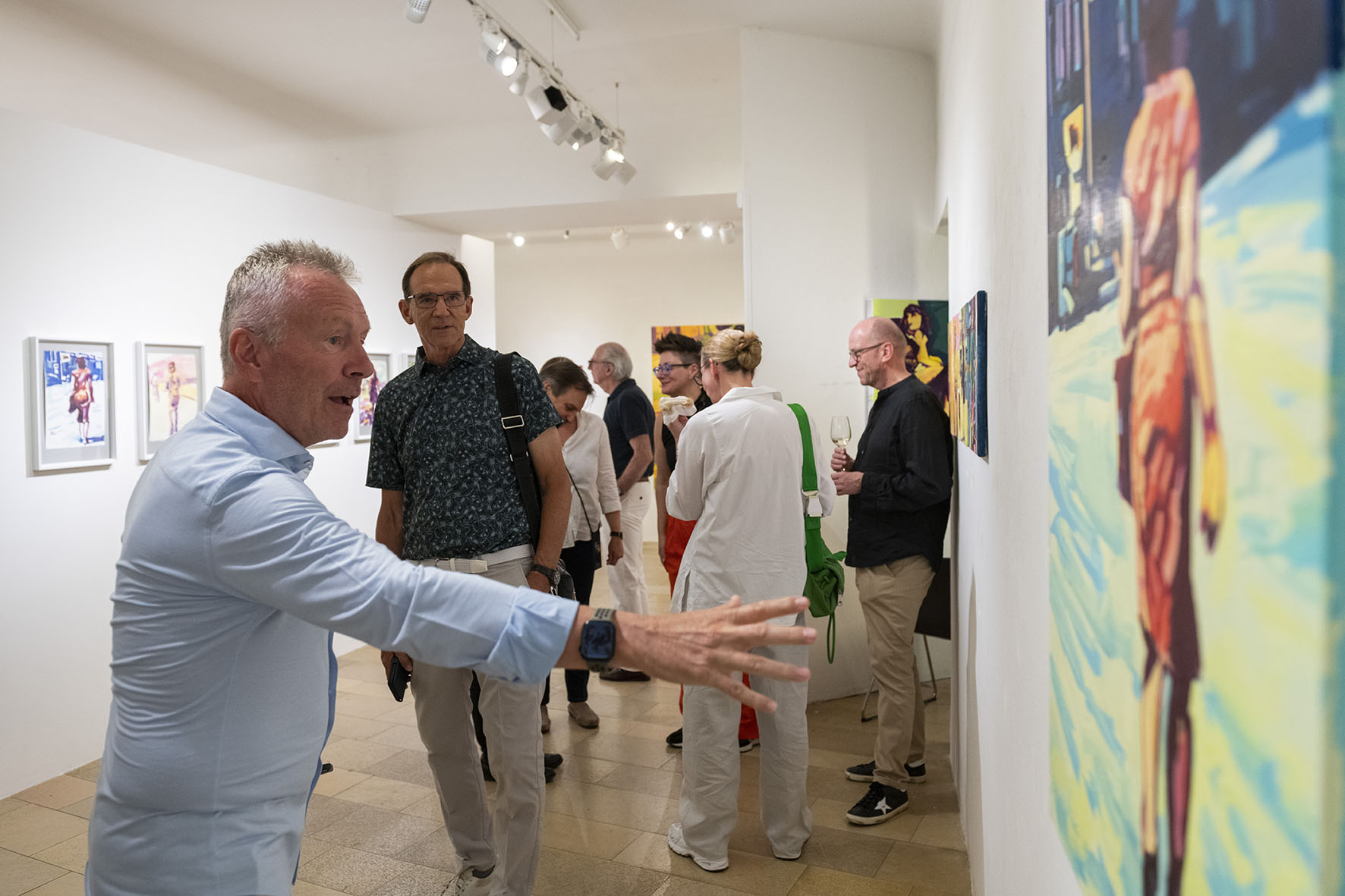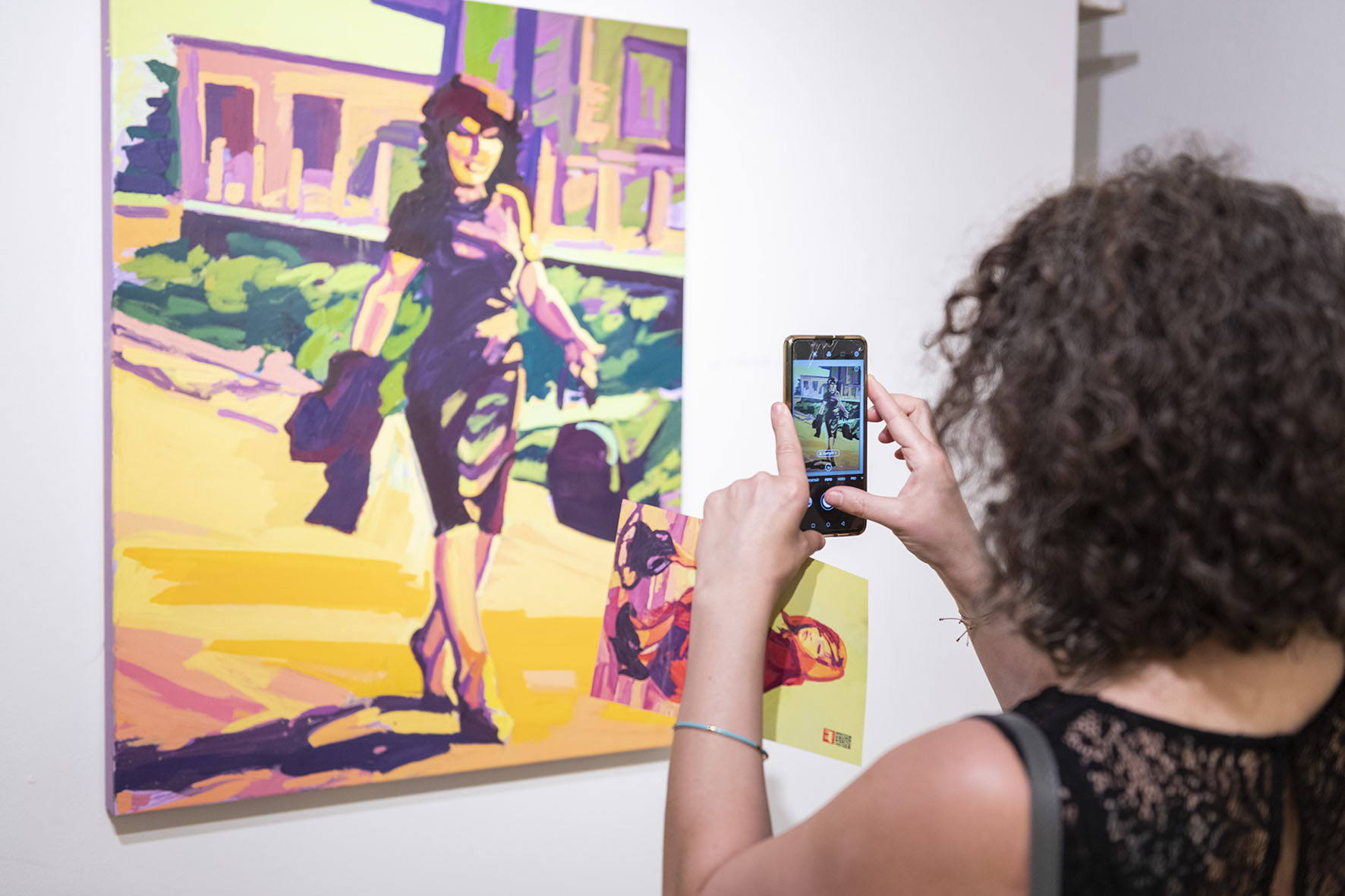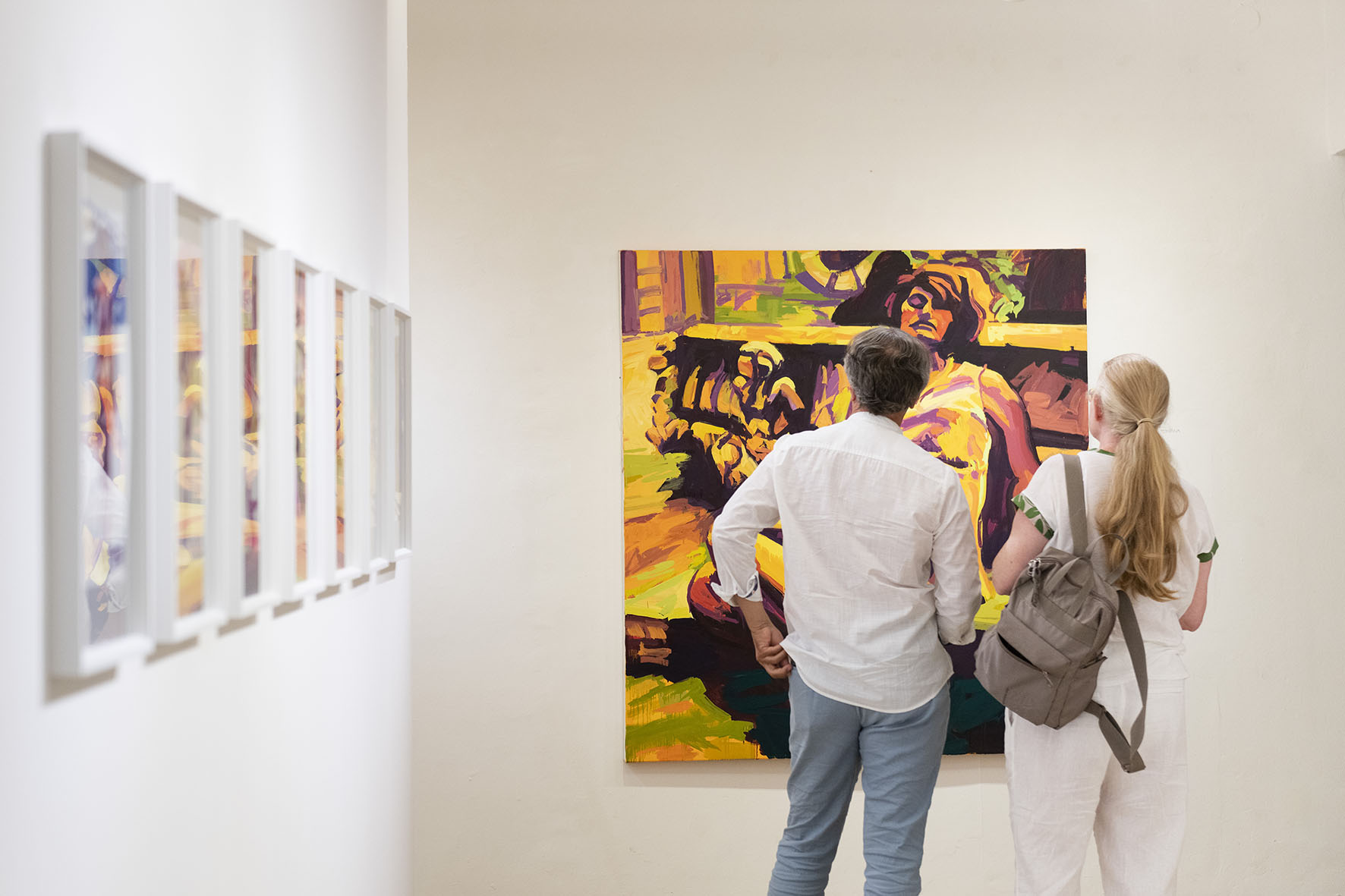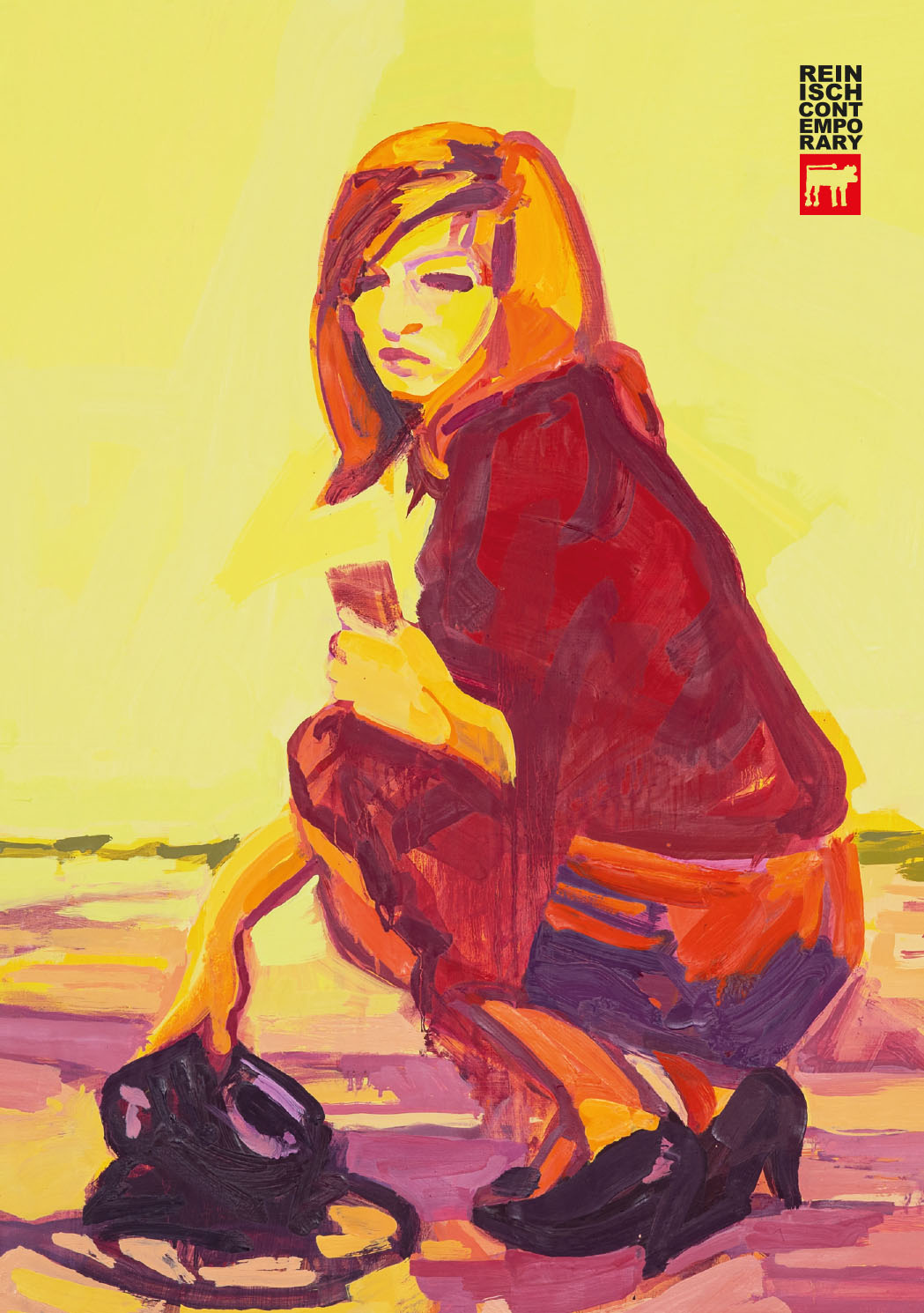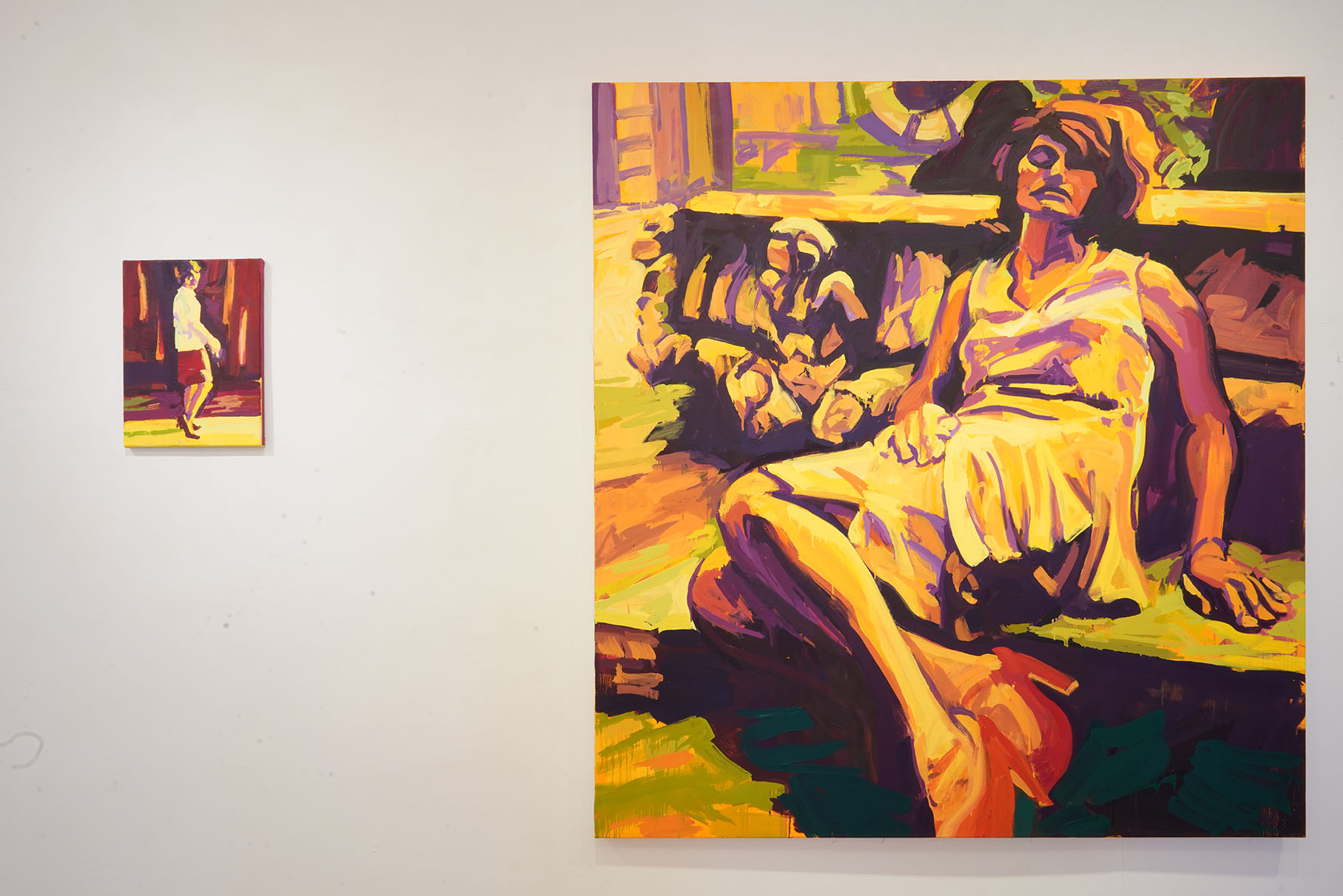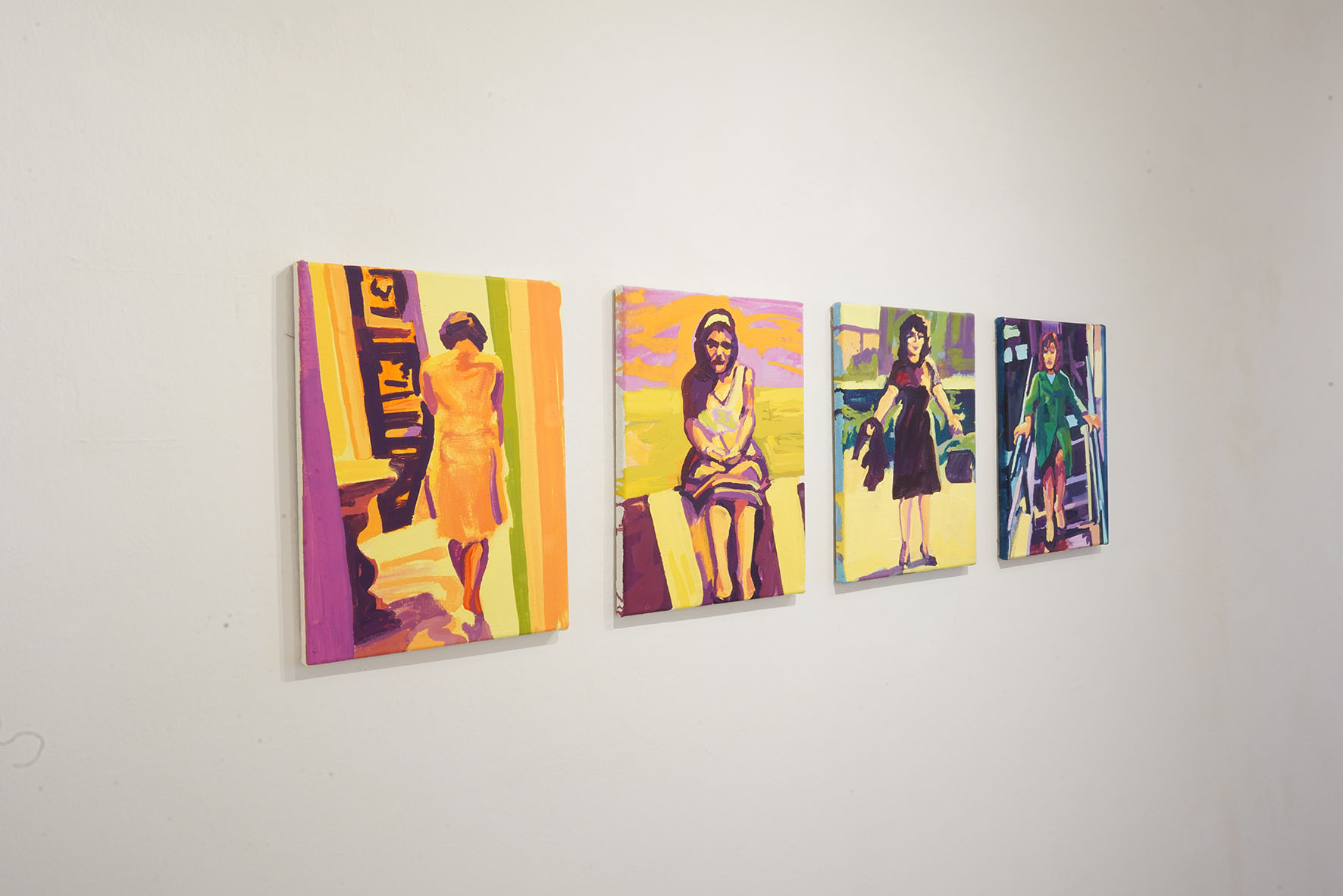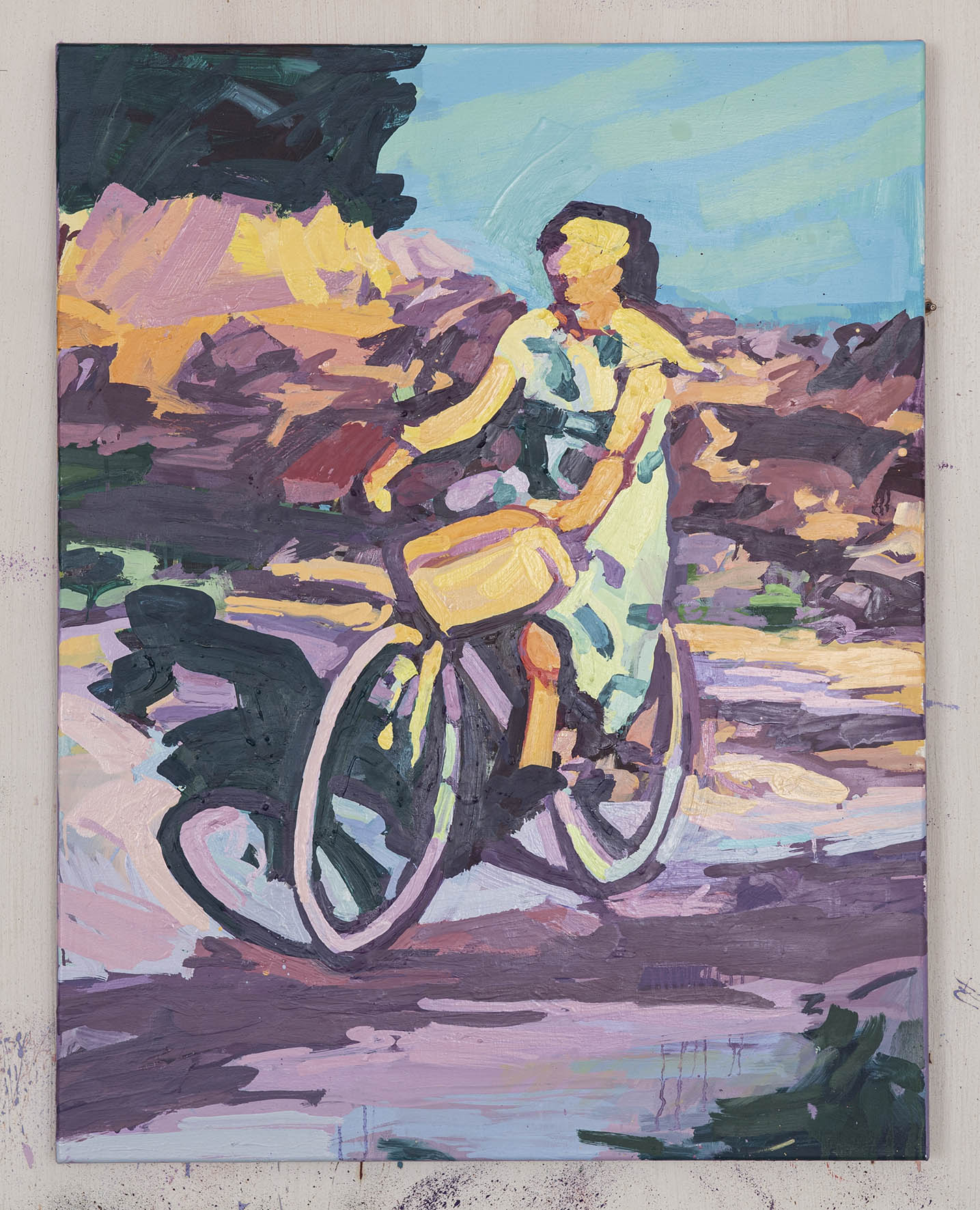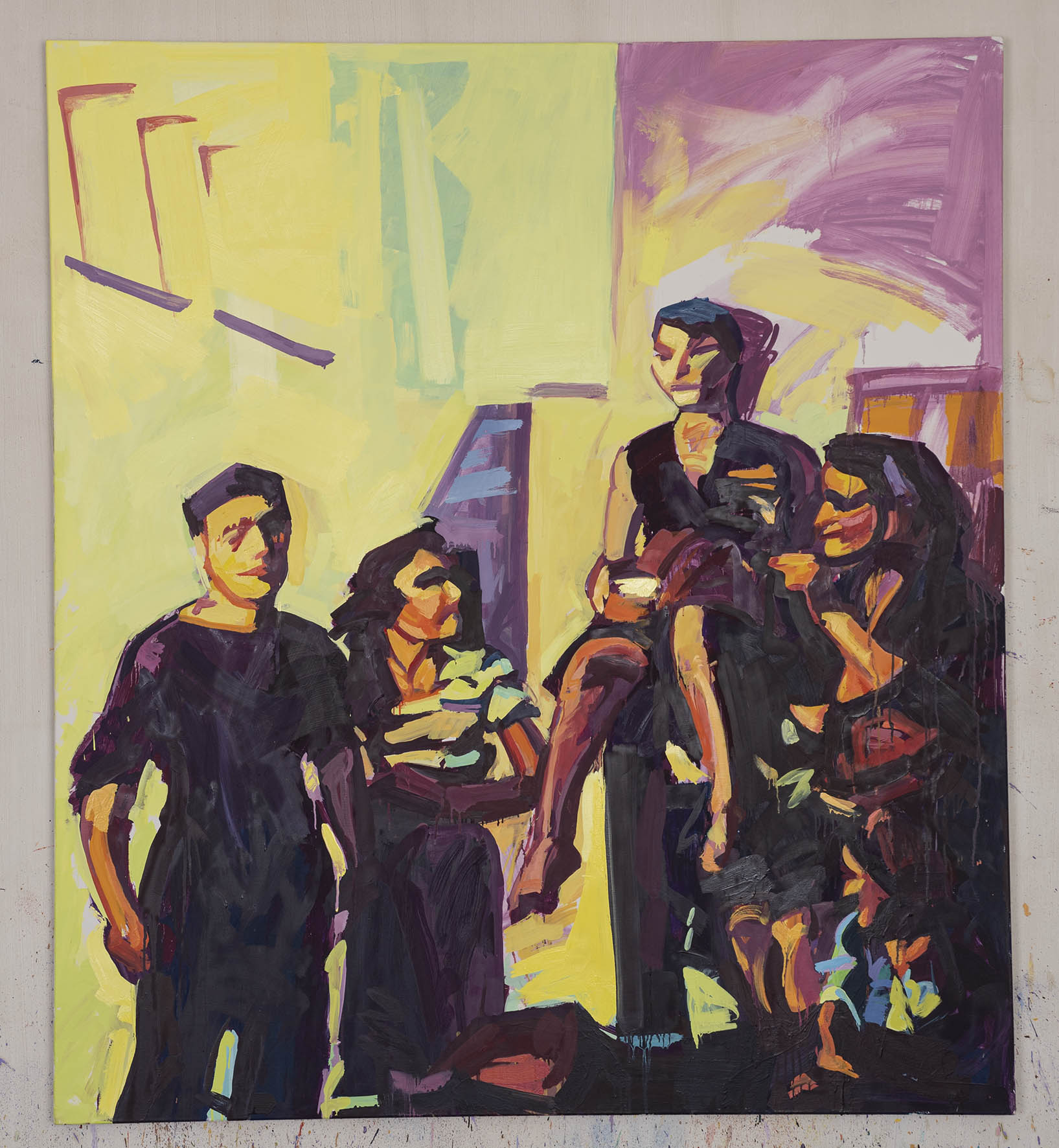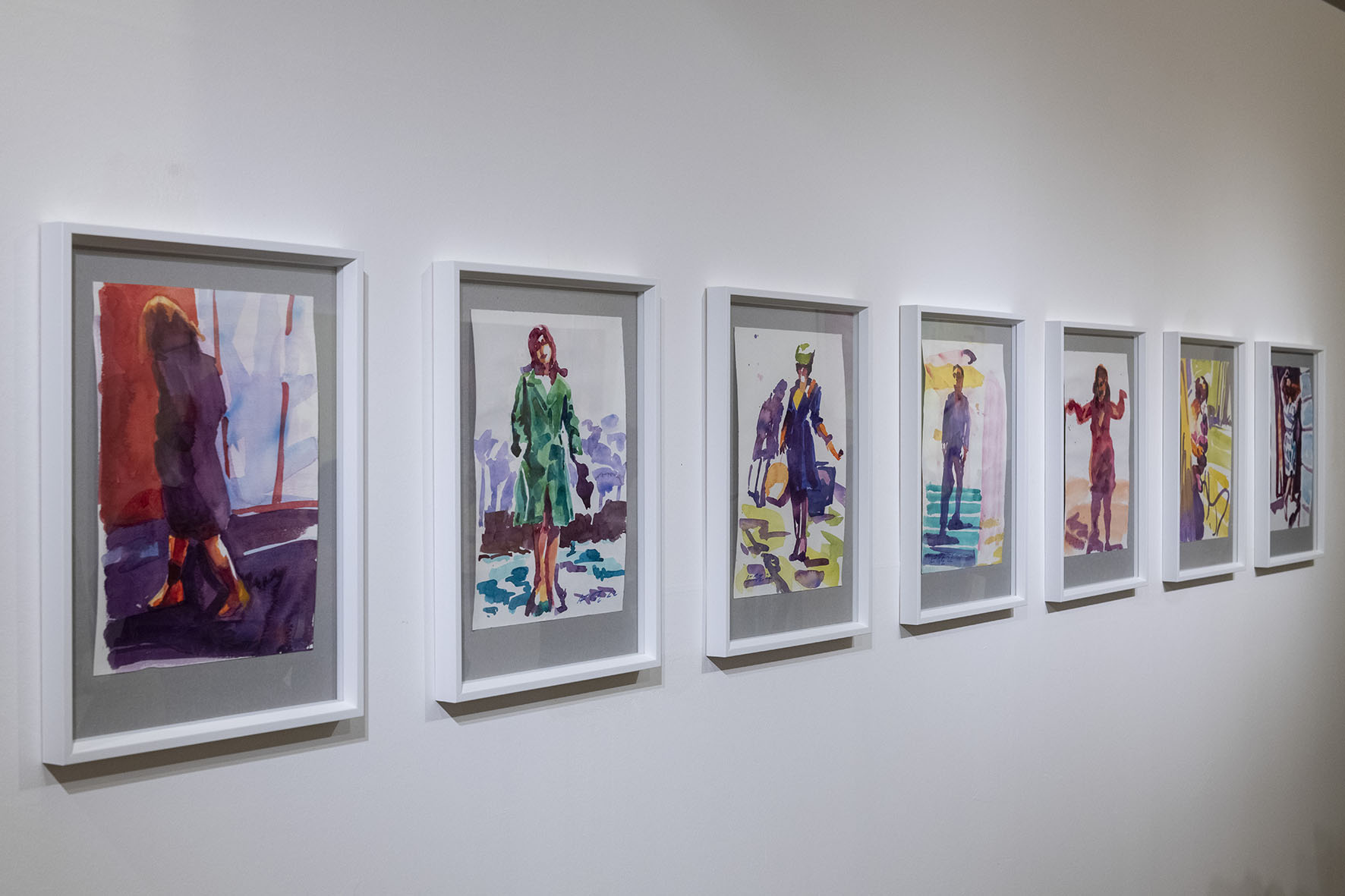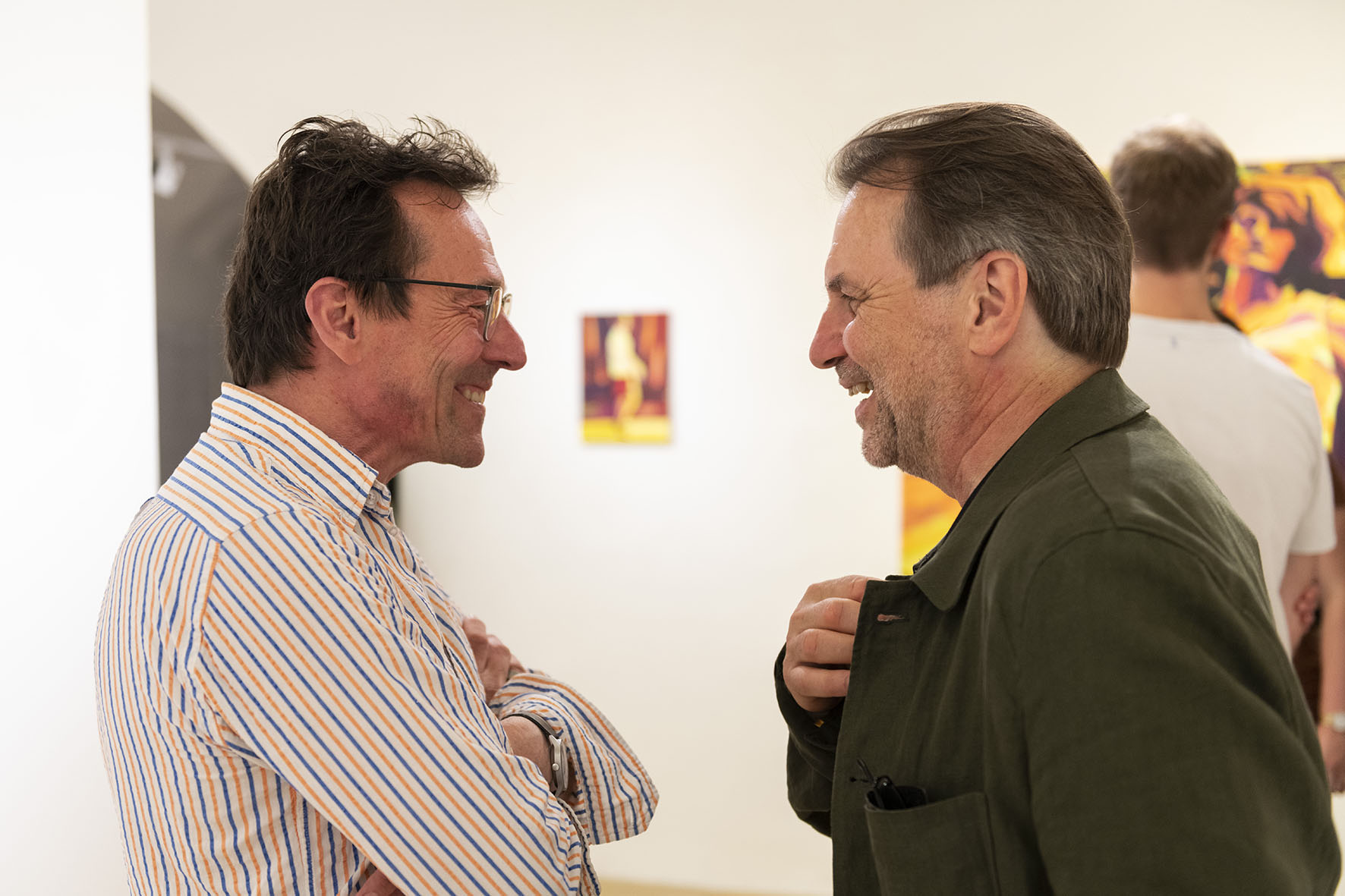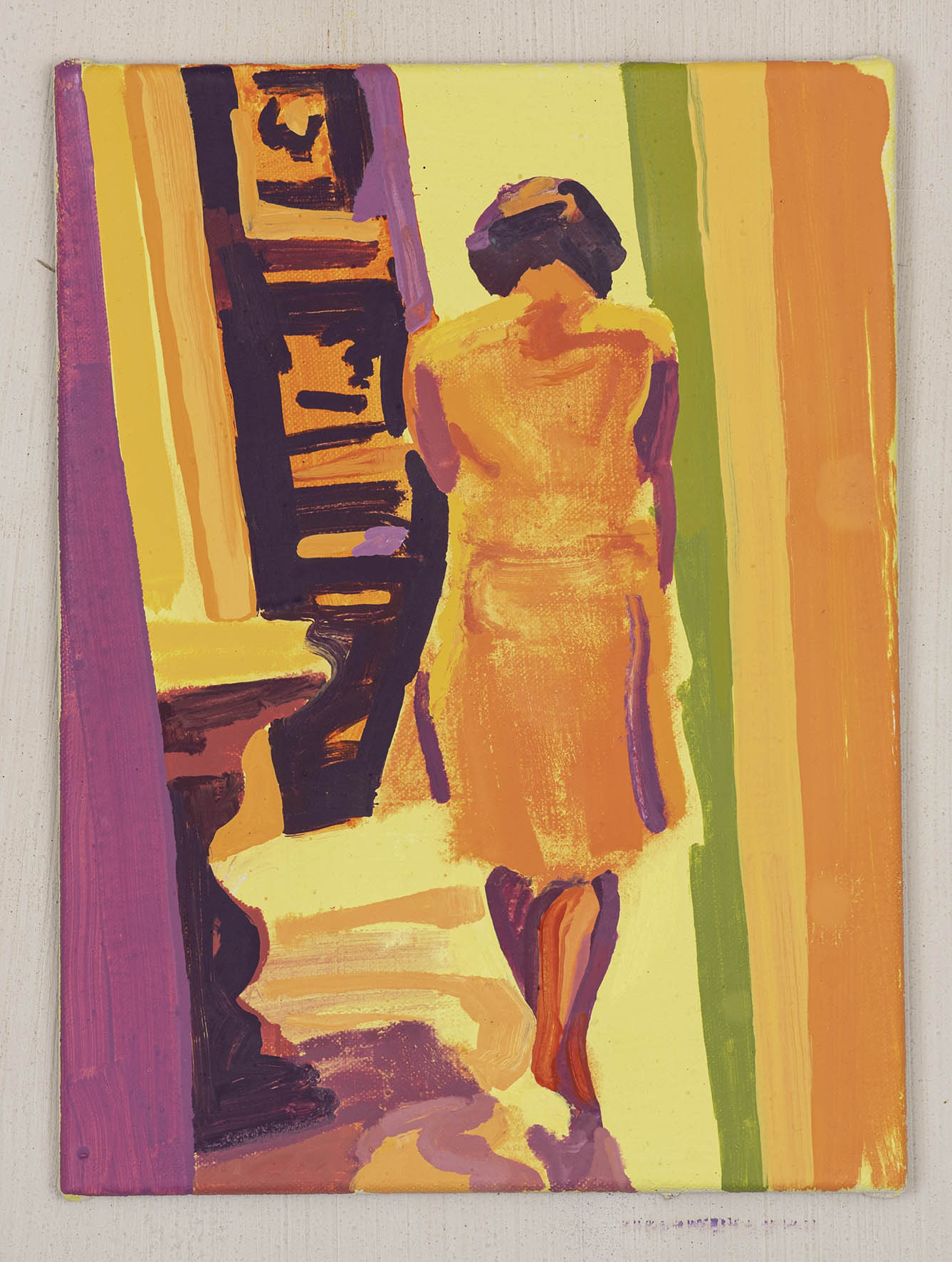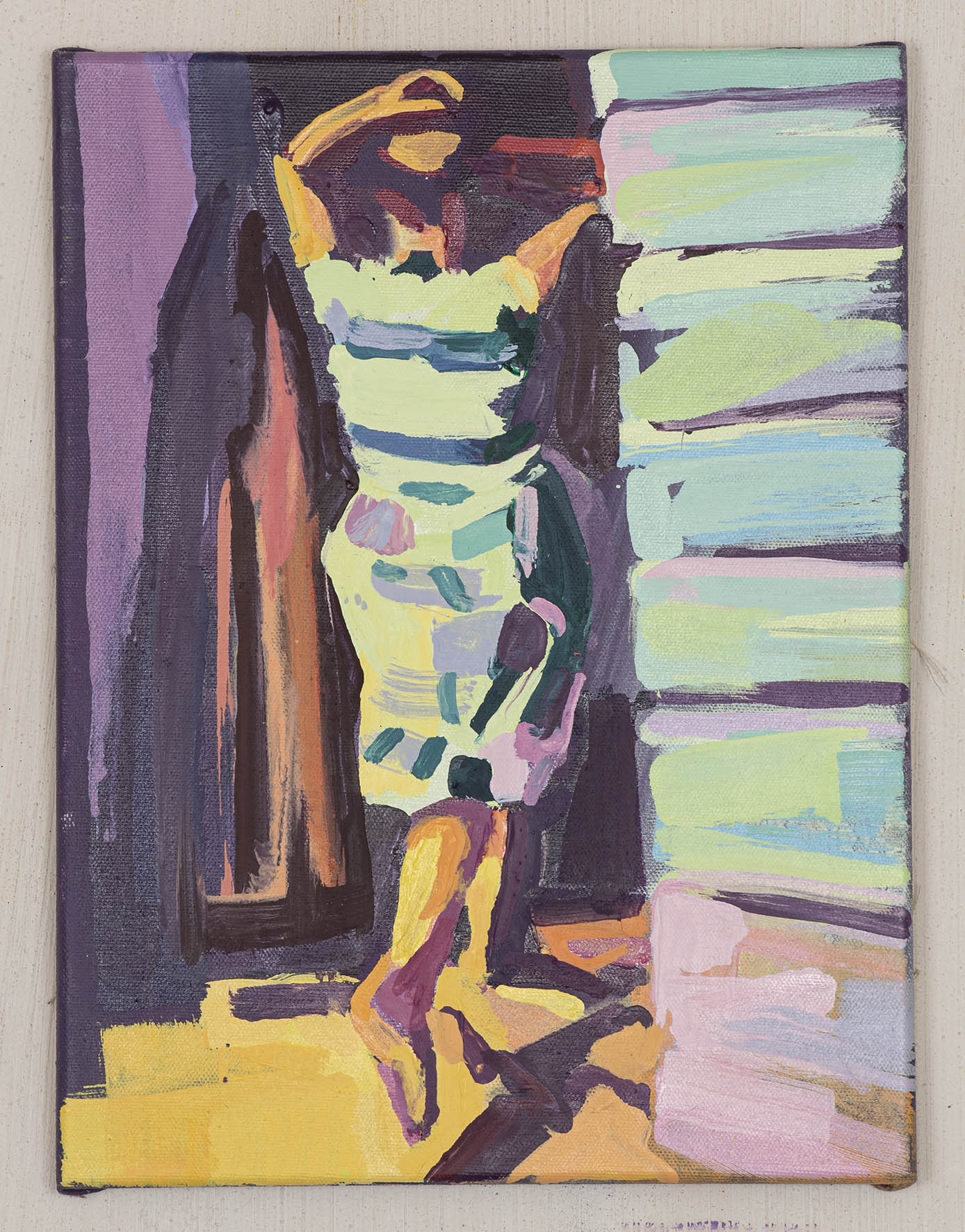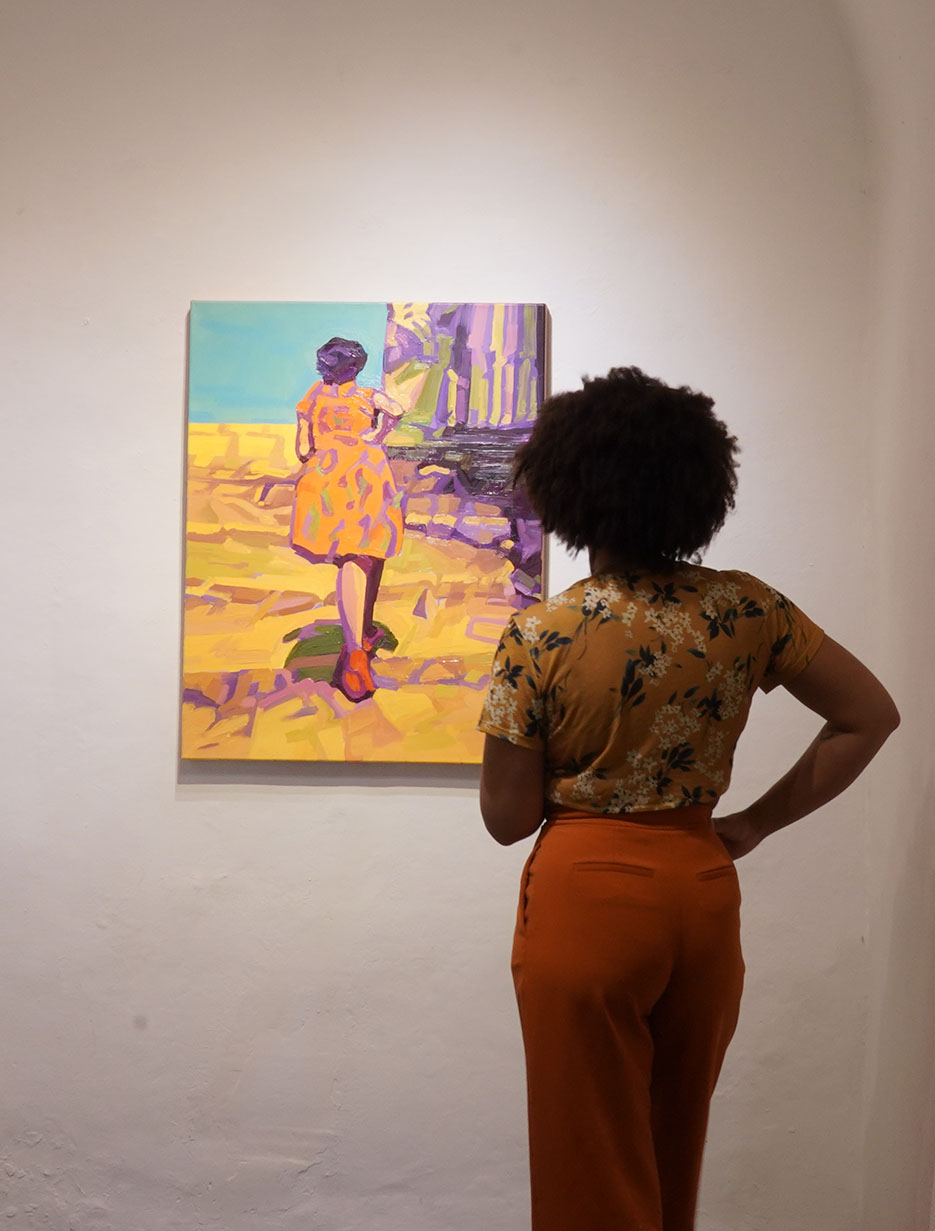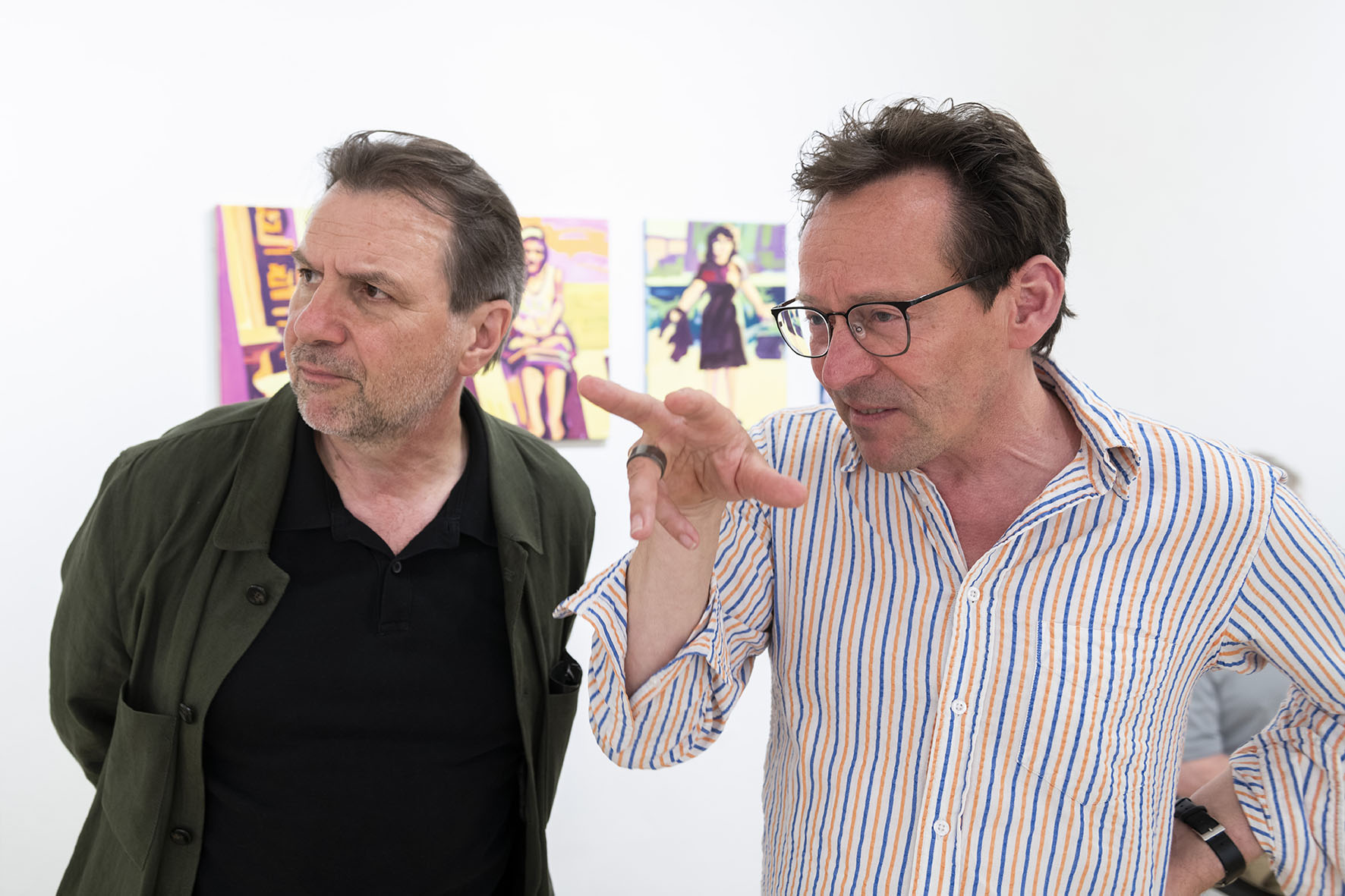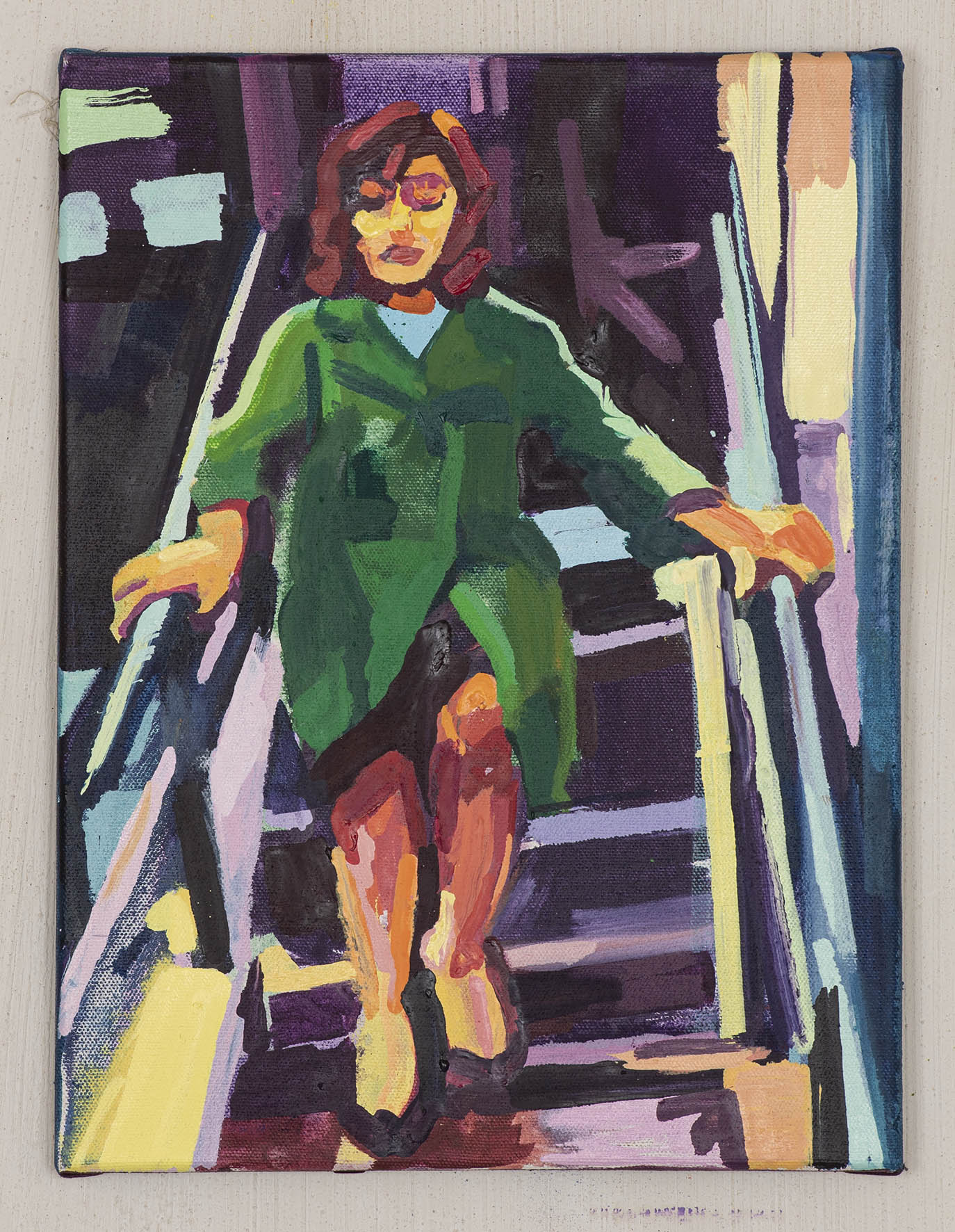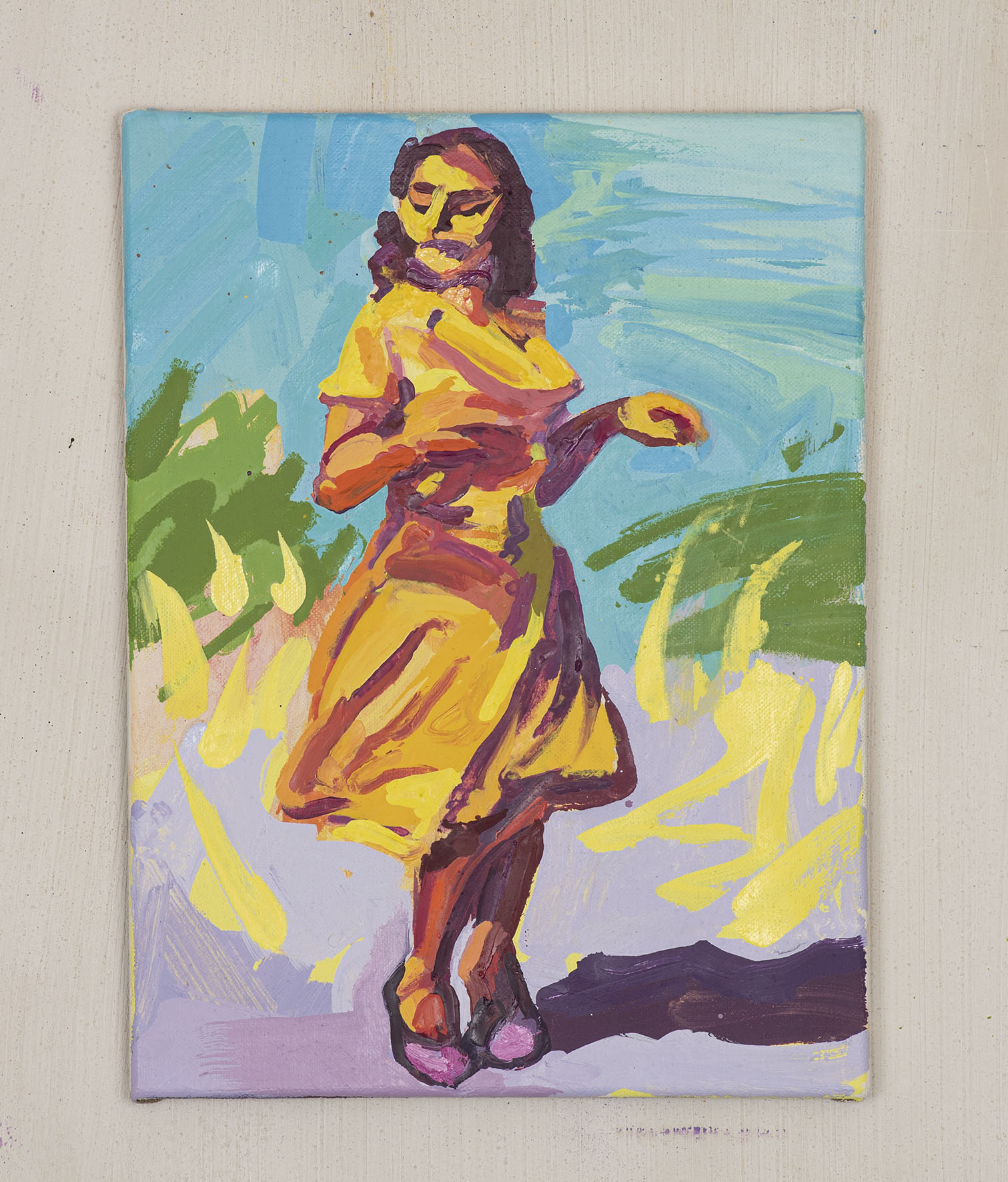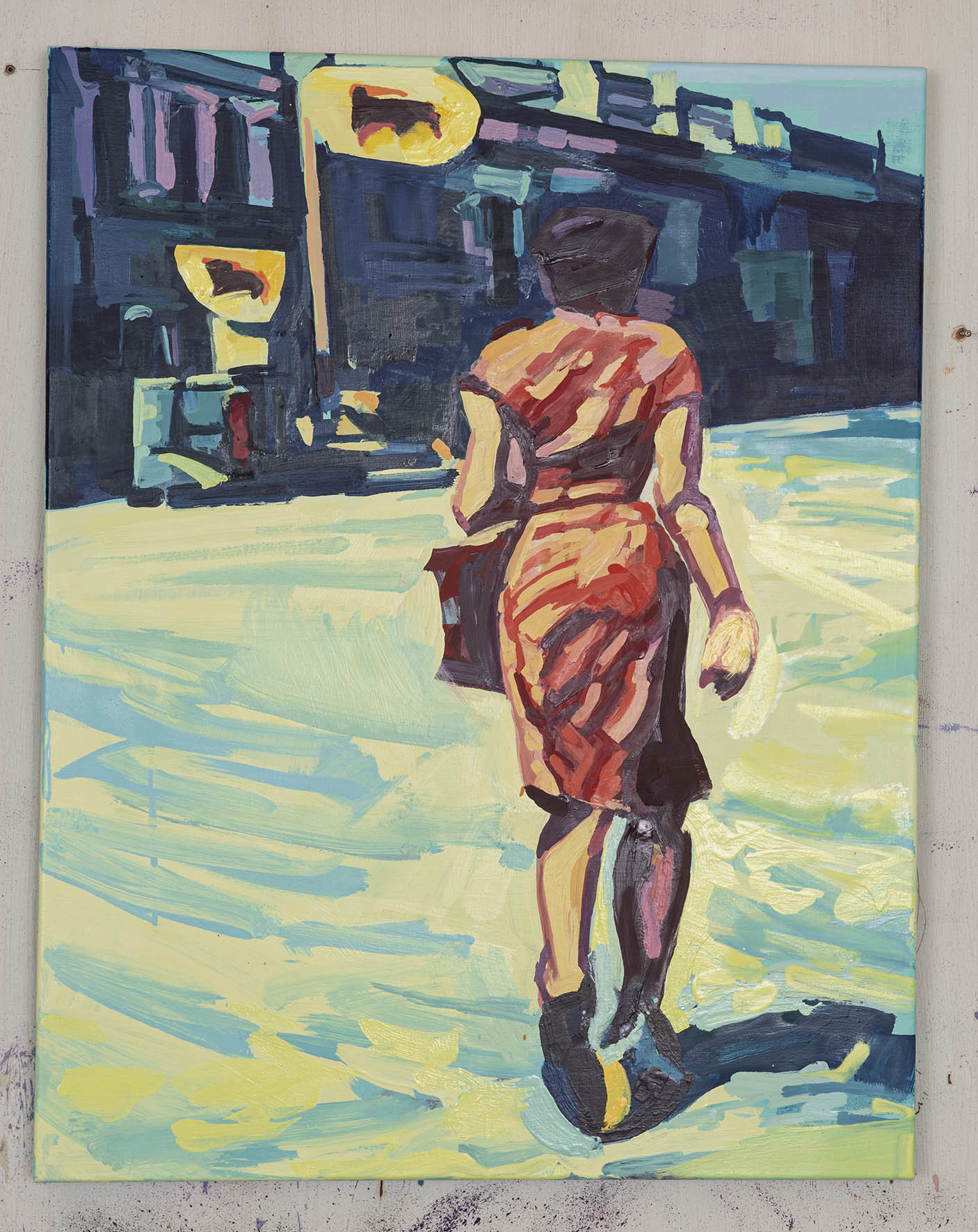HEROINE – Anton Petz
An exhibition in cooperation with STYRARTE
Opening 21st June, 7 pm
Welcome: Mathis Huber & Helmut Reinisch
Introduction: Manuela Schlossinger
The artist is present.
Exhibition until 11th of June 2023
La magia di Cinecittá
Anton Petz has been consistently exploring the artistic interpretation of the variety of media images over the past 15 years. His interests have encompassed challenging subjects such as migration, disasters, globalization, terrorism, as well as themes like exhibition openings, contemporary political arenas, and diverse markets. Images that we often automatically filter out due to the omnipresence of the information society were deemed worthy of depiction by the artist and, through their transformation into paintings, became a topic of interest once more. Petz applied his own artistic language to these topics, engaging with the material and reflecting on the images conveyed through media, offering a contemporary and relevant approach to painting. The fleeting nature of ubiquitous images in the media, on one hand, and the repetitive component of recurring similar reports, instill in the viewer a sense of egalitarianism, desensitization, and detachment towards the inundation of media images. By capturing these subjects on canvas, they were decelerated and made accessible once again for attentive reception.
The current series of works, “La Magia di Cinecittá,” is also born out of the artist’s engagement with media, but this time focuses on a completely different type of media source. Anton Petz, who spent his childhood and youth in Graz and later moved to Germany after completing his studies in Vienna, has now rekindled his fascination with Italian auteurs of the cinema during the 1950s and 1960s when he moved to Italy. These films had already captivated him during his time in Graz when he first watched them at the Rechbauer-Kino in the 1970s. The young artist was not only fascinated by the film stars but also, above all, by directors like Fellini, Visconti, and Pasolini, with their sometimes critical political stances. It was young writers and journalists for whom film served as an additional and complementary medium of expression.
During his reengagement with these films, it was primarily the controversial portrayal of women that captivated Anton Petz, as well as the visual sequences and camera angles that emerged around these roles within different directors’ works. While the images of previous groups of works often explored large-scale formats featuring various forms of crowds, the exhibited works here, with a few exceptions, place individual women at the center of interest. It is not superheroines who take the spotlight but rather naive, tragic, ambivalent, and often driven characters. Petz took intriguing and iconic film scenes and translated them into paintings. Transformed into the language of his painting, powerful works depicting proud heroines of everyday life emerged. The color fields, seemingly casually placed at first glance but actually meticulously arranged, set the figures against the abstracting background of their scenes. A few strokes capture the distinctive features of renowned actresses, allowing us to recognize greats such as Claudia Cardinale, Anna Magnani, Monica Vitti, and Sophia Loren, among others.
When considering the woman as the main subject, especially in relation to the large group composition and its title “L’Adorazione” – the adoration – immediate associations with classical depictions of the Virgin Mary arise for the Western eye. However, upon closer examination, not only the similarities become apparent but above all the differences. The portrayed women are not submissive and resigned victims; despite the gravity of their roles, they are proud and elegant figures who, even when stepping out of the picture, do so with their heads held high.
Anton Petz’s exploration of the “heroines” of Italian cinema from the 1950s and 1960s manifests itself in this exhibition through a collection of iconic and figurative artworks. His vibrant paintings, reminiscent of the cinematic masterpieces of Antonioni, Fellini, Visconti, or Pasolini, inspire viewers to envision the protagonists as active participants within the realms of imagery in their own minds.
Manuela Schlossinger
